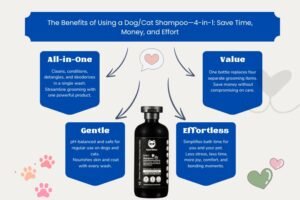Introduction: The Temptation of Treating Our Feline Friends
Have you ever caught yourself sneaking just one more little treat to your furry companion, only to wonder if you’re spoiling them a bit too much? You’re not alone. For many cat lovers, giving treats is one of the most enjoyable ways to bond and reward their pets. But how many cat treats are too many? When does indulgence turn into overfeeding, and what should every cat parent know to keep their beloved pet happy and healthy?
This guide dives deep into everything you need to know about cat treats — from understanding what they are, their benefits, to the risks of overfeeding, and how to make smart choices for your feline friend. Whether you are a seasoned cat owner or a new adopter, this story-driven exploration will equip you with insights to treat your cat right — the Hachi Wilson way, featuring premium cat treats that show love in every bite.
What Are Cat Treats? Understanding the Basics
Cat treats are small, flavorful snacks given to cats in addition to their regular meals. These treats can range from crunchy bites to soft morsels, specially formulated to be both tasty and safe. Beyond mere indulgence, cat treats serve multiple purposes:
- Training rewards: Positive reinforcement during behavior training.
- Dental health: Some treats help clean teeth and freshen breath.
- Nutritional supplements: Certain treats provide added vitamins or minerals.
- Bonding: Sharing a treat builds trust and affection between you and your cat.
Brands like Hachi Wilson specialize in premium cat treats made with high-quality ingredients that ensure not only great taste but also health benefits — no fillers, artificial colors, or harmful preservatives.
Why Are Cat Treats So Appealing to Cats and Owners Alike?
Cats are notoriously picky eaters, yet they often get excited for treats. This is because treats tend to have a stronger aroma and richer flavor than regular dry food, which appeals to a cat’s keen senses. For owners, treats are a way to:
- Reward good behavior.
- Comfort or calm a stressed cat.
- Express love and care.
- Provide variety in the cat’s diet.
However, the joy of giving treats comes with responsibility, which brings us to a crucial question…
How Many Cat Treats Should You Give Daily?
Veterinarians and pet nutrition experts generally recommend that treats should make up no more than 10% of a cat’s daily caloric intake. This means that the quantity and frequency of treats should be carefully controlled.
Here’s a simple rule of thumb:
- Small cats (under 8 lbs): Limit treats to 3-5 small pieces per day.
- Medium cats (8-12 lbs): Up to 5-7 treats daily.
- Large cats (over 12 lbs): Up to 7-10 treats daily.
This varies based on the treat size, calorie content, and your cat’s overall health. Premium cat treats like those from Hachi Wilson often have detailed feeding guidelines on their packaging, making it easier to stick to recommended portions.
What Happens When Cats Eat Too Many Treats?
Overfeeding treats can lead to several health issues:
1. Weight Gain and Obesity
Excess calories from treats can cause rapid weight gain, leading to obesity, which increases the risk of diabetes, arthritis, and heart problems.
2. Nutritional Imbalance
Treats don’t replace balanced meals. Too many treats might reduce your cat’s appetite for nutrient-rich food, causing deficiencies.
3. Digestive Issues
Overindulgence may result in vomiting, diarrhea, or constipation, especially if the treats are rich or unfamiliar.
4. Behavioral Problems
Cats may start begging excessively or refuse regular food if they expect treats too often.
How to Choose the Right Cat Treats for Your Cat
Not all cat treats are created equal. When selecting treats, consider:
- Ingredients: Look for natural, high-quality proteins like chicken, salmon, or turkey.
- Calorie count: Opt for low-calorie treats if your cat is prone to weight gain.
- Purpose: Choose treats for dental health, hairball control, or specific dietary needs if necessary.
- Brand reputation: Trust premium cat treat brands like Hachi Wilson that prioritize your cat’s well-being.
Incorporating Cat Treats Into Your Cat’s Diet Responsibly
Here are some practical tips for responsible treating:
- Use treats mainly for training or rewarding good behavior.
- Break larger treats into smaller pieces to avoid overfeeding.
- Adjust your cat’s regular meal portions to compensate for treats.
- Monitor your cat’s weight and adjust treat frequency accordingly.
- Avoid human foods or homemade treats unless vet-approved.
Comparing Premium Cat Treats: What Makes Hachi Wilson Stand Out?
Many cat owners have discovered the difference premium cat treats make in their pets’ health and happiness. Hachi Wilson’s cat treats are crafted with:
- Real, wholesome ingredients.
- No artificial additives.
- Balanced nutrition tailored for cats’ needs.
- Delicious flavors that cats love.
These qualities make Hachi Wilson treats a trusted choice for those who want to spoil their cats without compromising on health.
Signs You May Be Giving Too Many Cat Treats
To ensure you’re not overdoing it, watch for:
- Sudden weight gain.
- Decreased appetite for regular food.
- Digestive upsets.
- Increased begging or behavioral changes.
If you notice any of these, it might be time to cut back and consult your vet.
Frequently Asked Questions About Cat Treats
Daily Treating Guide: How Many Cat Treats Are Too Many? – Frequently Asked Questions
Q1: Can I give my cat treats every day?
Yes, but in moderation. Treats should not exceed 10% of your cat’s daily calories.
Q2: Are premium cat treats better than regular ones?
Generally, yes. Premium cat treats like Hachi Wilson offer higher-quality ingredients and fewer fillers, which can be better for your cat’s health.
Q3: What’s the best way to use treats for training?
Use small, low-calorie treats as positive reinforcement during training sessions. Break larger treats into bite-sized pieces to avoid overfeeding.
Q4: Can treats cause weight gain in cats?
Yes, overfeeding treats can lead to extra calories, causing weight gain and obesity.
Q5: Are there treats that also benefit dental health?
Yes, some cat treats are designed to help clean teeth and reduce tartar buildup. Look for dental-specific treats on labels.
Q6: How can I tell if my cat has eaten too many treats?
Watch for symptoms like vomiting, diarrhea, lethargy, or refusal to eat regular food.
Q7: Are human foods safe as cat treats?
No, many human foods are toxic or unhealthy for cats. Always stick to cat-specific treats unless advised by a vet.
Q8: What ingredients should I avoid in cat treats?
Avoid treats with artificial colors, preservatives, excessive fillers, or harmful ingredients like onion, garlic, or chocolate.
Conclusion: Treat Your Cat with Love, Care, and Knowledge
Treating your cat is a wonderful way to show affection and create lasting bonds. But knowing how many cat treats are too many is key to keeping your feline friend healthy, happy, and thriving. By choosing premium cat treats from trusted brands like Hachi Wilson and following recommended daily limits, you can enjoy the best of both worlds — indulgence and wellness.
Remember, moderation is the secret. Give your cat the gift of delicious treats and the gift of health in equal measure. For more tips on cat care, check out our other resources and share your own experiences with cat treats below — because every cat’s story deserves to be told.
- Healthy Snacking for Cats: How to Use Cat Treats Without Overfeeding
- Why Hachi Wilson Cat Food Is the Purr-fect Choice for Every Mealtime
- How to Add Variety to Your Cat’s Diet with Fish Cat Food and Treats
- How to Add Variety to Your Cat’s Diet with Fish Cat Food and Treats
- 5 Benefits of Switching to Hachi Wilson’s Chicken Dry Cat Food
- Waterless Dog Shampoo: The Ultimate Grooming Solution for Busy Pet Parents
- The Benefits of Using a Dog/Cat Shampoo—4-in-1: Save Time, Money, and Effort
- Why Oatmeal Dog Shampoo Is a Must-Have for Your Pet’s Skin Health












